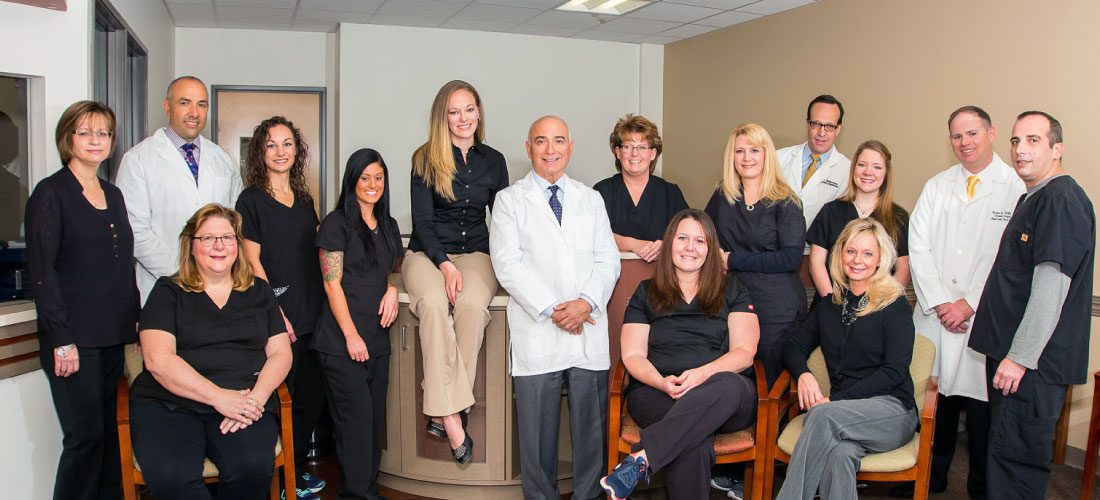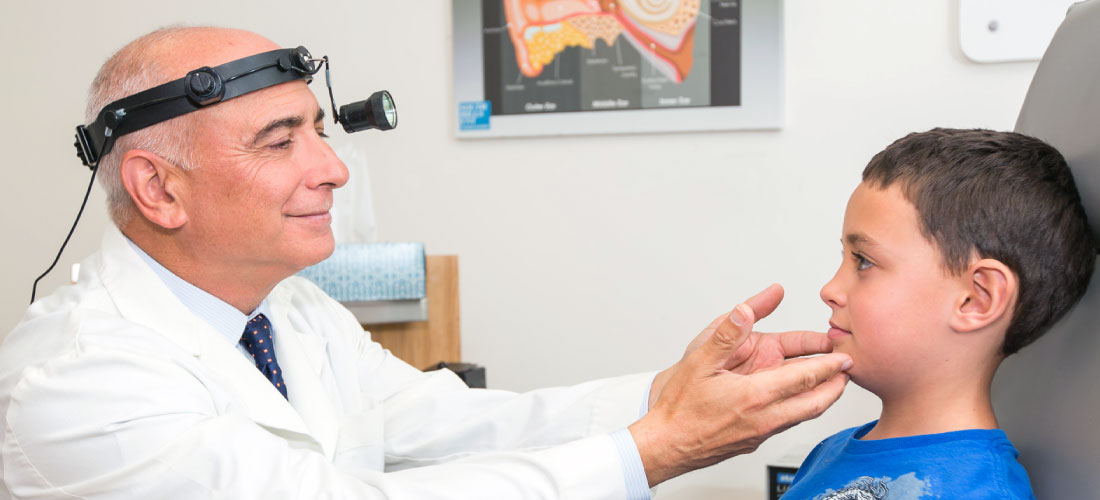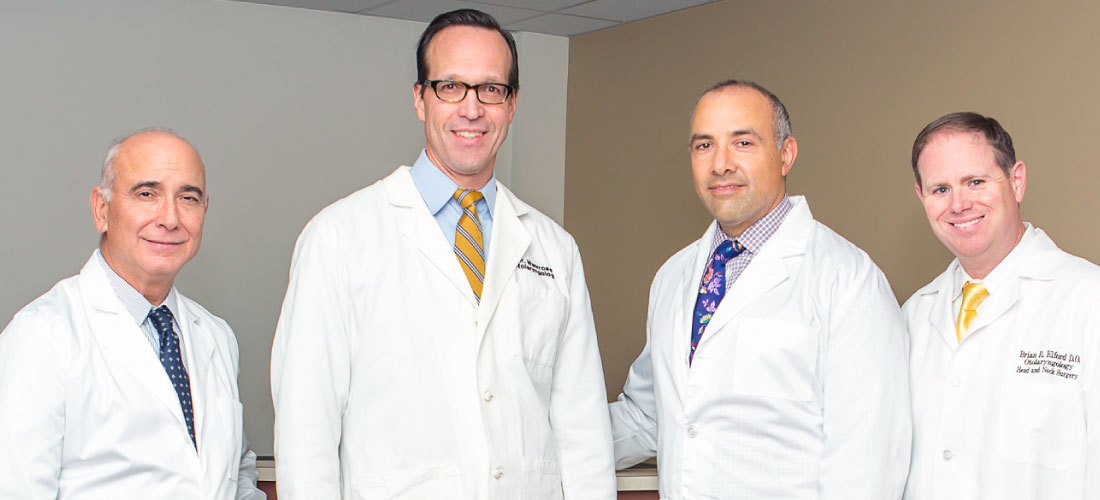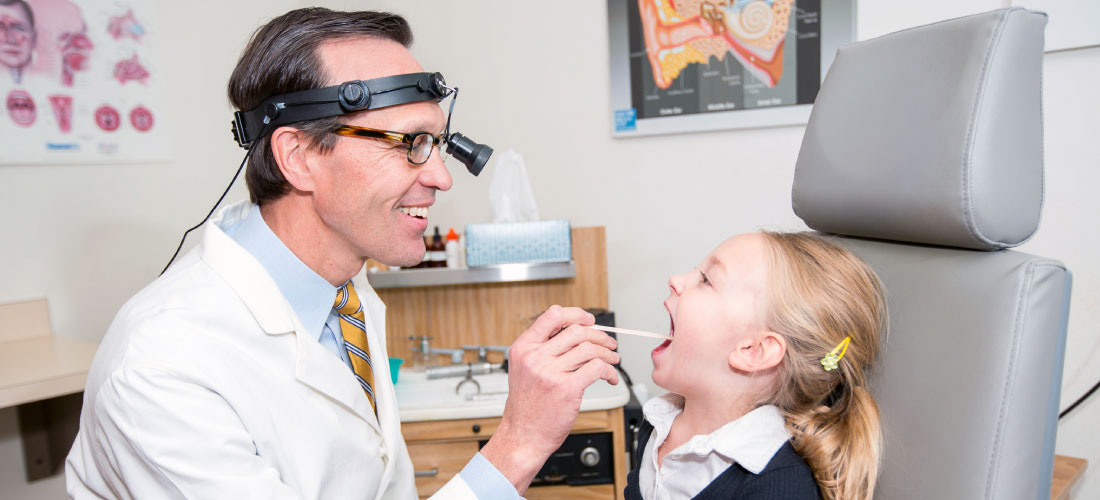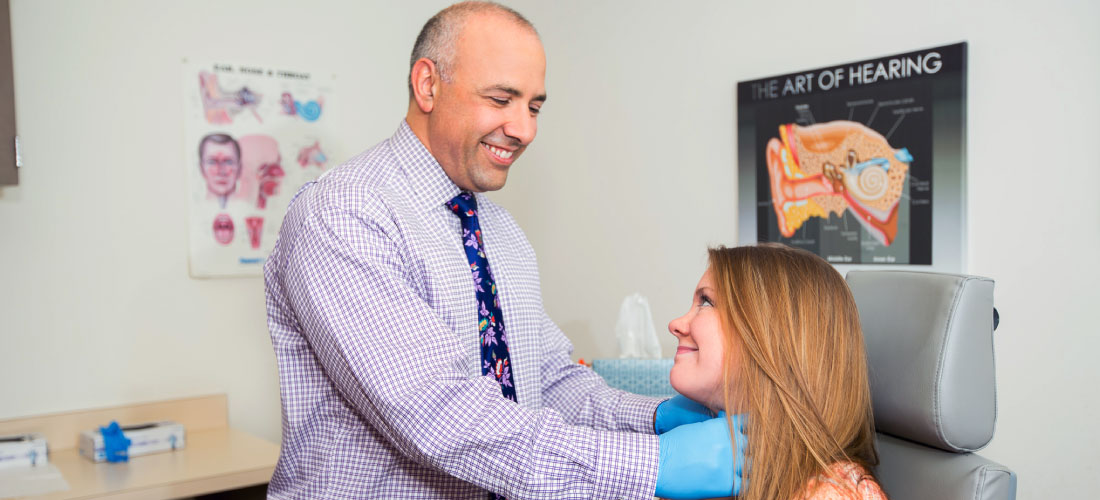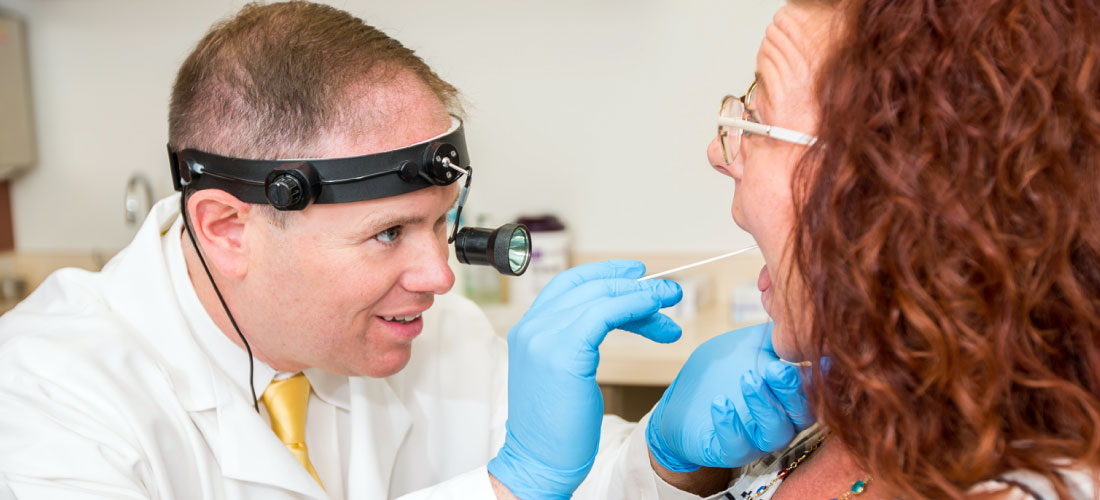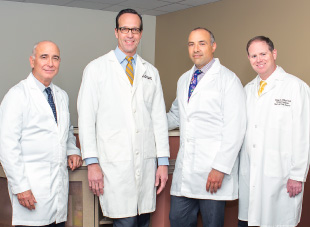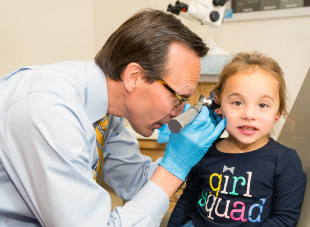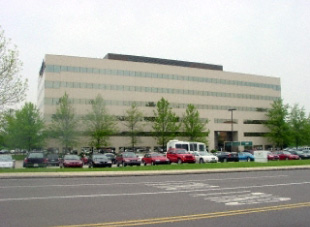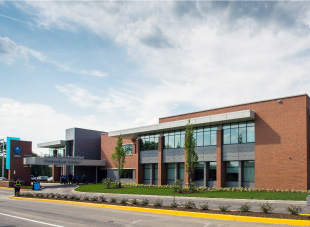Call Us Today
Patient Resources
Otomycosis
Otomycosis is a fungal infection of the ear canal. Normally, bacteria and fungi live on the skin all over the body including the ear canal.
These microorganisms, called normal flora, exist in harmony and help keep each other “in check” so neither grows out of control. In addition, earwax is an oily substance produced by glands in the ear canal and the dead skin on the surface of the canal. It has antibacterial and antifungal abilities to protect against infections. The acidic nature of earwax also helps prevent the growth of fungi and bacteria. Fungal infections of the ear canal can be mistaken for bacterial infection, and they can also occur together. These infections occur most commonly in the summer swimming season when heat, humidity and water exposure is more prevalent.
What Are the Symptoms of Otomycosis?
Symptoms of otomycosis typically include:
- Pain in the ear
- Itching of the ear
- Plugging of the ear with decreased hearing
- Drainage from the ear
- Symptoms occurring at the same time
What Causes Otomycosis?
Removing earwax with cotton-tipped swabs can increase the possibility of an ear canal infection because the natural protectant of the skin is gone. Excess moisture can also foster fungal infections of the ear canal in some patients. Otomycosis occurs when there is moisture, injury to skin and a lack of earwax to protect the ear.
Fungi that live on the skin in the ear canal or are introduced externally need a warm, moist environment to grow. The nature and shape of the ear canal allows water to remain there for a long period of time, letting humidity build up quickly when the ear canal is plugged. Sometimes, fungal infections of the ear canal occur as a result of using antibiotics. Antibiotic eardrops suppress the growth of bacteria but not the growth of fungi. When the bacteria die, the fungus has nothing to keep it “in check,” so it can grow and lead to an ear canal infection, or otomycosis.
What Are the Treatment Options?
Treatment for otomycosis involves preventing the growth of the fungus by removing the dead skin and fungal elements. This is best accomplished by a thorough cleaning of your ear canal performed by an ENT (ear, nose and throat) specialist, and the application of an antifungal agent. Commonly, your physician may ask you to use a combination of alcohol and vinegar to wash your ear. Removing the dead skin and creating a dry, slightly acidic environment prevents the growth of fungi.
If you have a hole in your eardrum, the options for treating otomycosis are limited. Your physician may prescribe a topical antifungal called clotrimazole or a topical antifungal powder, which helps dry the ear and kill the fungus. Some physicians use an antifungal medication called gentian violet, which some patients refer to as “the purple stuff” due to its deep purple color. One last option is an antifungal cream placed in the ear canal and left for a few days. Your physician may fill the entire ear canal with the cream, which will gradually melt and come out.
It is important to protect your ears If you have repeated fungal or bacterial infections. For instance, you may need to keep water out of your ears when bathing, showering or swimming. Keeping your ears dry and avoiding excessive use of cotton-tipped swabs will help get rid of the problem.
What Questions Should I Ask My Doctor?
- How can I protect my ear when showering or exposed to water?
- What should I do to keep my ear clean and free of debris?
- When should I follow up with you?
- How do I prevent further infections?
- I am immunosuppressed; is there anything special I need to worry about?
- What should I be concerned about that would make me call your office?
Recurrent Respiratory Papillomatosis (RRP)
Recurrent respiratory papillomatosis (RRP) is an uncommon condition caused by the human papilloma virus (HPV) that affects roughly 2,000 people in the United States.
Viral, non-cancerous warts called papillomas develop on the surfaces of the respiratory tract; most cases of RRP involve the voice box, or larynx. Occasionally, papillomas will grow in the mouth or windpipe and, in rare cases, the lungs. There are two types of RRP: adult onset and juvenile onset.
Even though papillomas are not cancerous, they are dangerous because their presence in the airway can make breathing difficult. Growth of papillomas can cause severe, sometimes life-threatening airway obstruction. After removal, papillomas tend to regrow because the virus persists in the tissue even after the growths are removed. It is important to have frequent examinations to keep the papillomas at a manageable level. While they are noncancerous, some very rare cases can become cancerous.
What Are the Symptoms of RRP?
Symptoms of RRP can include:
- Hoarseness
- Noisy, labored breathing (stridor)
- Respiratory trouble
- Chronic cough
- Feeling that something is stuck in the throat (globus)
- Recurrent pneumonia
- Snoring
- Weak crying in infants, failure to grow and gain weight at the expected rate, episodes of choking
What Causes RRP?
RRP is caused by HPV. Between 75 and 80 percent of people will be infected by HPV during their lifetime if not vaccinated against the virus. Many people infected with HPV may never develop symptoms. HPV is transmitted through genital contact, not through casual contact. It is not well understood why some people who have been exposed to the virus develop RRP and others do not.
Two specific HPV subtypes are responsible for more than 90 percent of cases of RRP: HPV 6 and HPV 11. Type 11 appears to be more aggressive and associated with airway obstruction and spreading to the lungs. Adult onset recurrent respiratory papillomatosis (AORRP) develops in the fourth decade of life whereas juvenile onset recurrent respiratory papillomatosis (JORRP) develops before age five. JORRP is more common and more severe than AORRP.
In children, HPV is likely transferred from an affected mother to the child during labor. However, C-sections do not appear to have a protective effect. Risk factors for JORRP include being a first-born child, having a vaginal delivery or prolonged labor, and the mother being under 20 years of age. In adults, less is known about the mode of transmission. Some patients are infected during infancy, but the disease may not develop until adulthood. Some evidence suggests that RRP can develop after HPV is transmitted through oral sexual contact. AORRP is worsened by tobacco use, gastroesophageal reflux disease (GERD), and radiation therapy.
What Are the Treatment Options?
Currently, there is no “cure” for RRP. The size and location of the lesions helps the treatment team decide which approach is best for each patient. The goals for treatment are to remove the papillomas, create an open airway, improve voice quality, and increase the time between surgical procedures. RRP is diagnosed by examining the upper airway by an ENT (ear, nose, and throat) specialist, or otolaryngologist, during an office visit using a camera that is inserted through the nose or mouth. Once noted, diagnosis is confirmed by biopsy.
RRP is treated with surgery to remove the benign growths from the airway without damaging the underlying tissue or organs. This is usually performed in the operating room under general anesthesia. Some patients may require surgery every few weeks while others may only require surgery twice a year or a few times during their life. Surgical techniques used to remove RRP lesions include cold excision, microdebridement, and laser removal. Cold excision is the use of sharp surgical equipment to remove papillomas. Microdebridement involves suctioning the affected area, which is then cut away by a fast-rotating blade or shaver. Laser ablation uses a CO2 laser to directly destroy the papillomas in the airway.
Certain medications, including interferon, indole-3-carbinol, and cidofovir®, may be recommended to try to reduce the rate of papilloma regrowth, thereby increasing the time between necessary surgeries. Interferon is a synthetic form of certain proteins produced by the immune system, but because of its adverse effects, it is a second-line therapy for patients with hard-to-manage severe diseases. Indole-3-carbinol is a compound found in cruciferous vegetables such as cabbage, cauliflower, and broccoli, and has been shown to slow papilloma growth.
The most common antiviral medication used in patients with RRP is cidofovir. This drug is injected into the papilloma to slow the regrowth and increase the time between therapies. Initial studies of cidofovir indicate that it’s active against RRP and may lead to a partial response in some patients and complete remission in others. However, cidofovir may also cause several side effects and has a small potential for causing the papillomas to become cancerous.
Additional drugs are being studied as potential therapies for patients with RRP, including the monoclonal antibody bevacizumab. Bevacizumab has been shown to be effective when administered intravenously after surgical removal of papillomas. This form of treatment seems especially helpful in patients with rapidly recurring papillomas in the larynx and trachea.
In some severe cases, where tumor growth is aggressive, a patient may need a tracheostomy to keep the airway open. A tracheostomy involves surgically inserting a tube into the windpipe through the front of the neck. A tracheostomy is only used as a method of last resort because the procedure may allow for the spread of disease further into the respiratory tract.
An HPV vaccine, Gardasil-9®, has been developed to protect women from developing HPV-related cancers such as cervical cancer, men from developing penile cancer, and both men and women from developing genital warts and certain cancers of the head and neck. Among the subtypes of HPV covered by the vaccine are HPV 6 and HPV 11, those that cause RRP. The use of the Gardisil-9 vaccine in children before they are exposed to the virus will drastically lessen the spread of HPV in the general population. Unfortunately, this type of vaccine does not make existing infections go away.
What Questions Should I Ask My Doctor?
- How and when did I contract HPV?
- What will you use to remove the lesions from my airway?
- Am I a candidate for in-office management of my RRP? Will I remain awake during the procedure? Are there advantages or disadvantages to this approach?
- Is laser treatment for RRP available at this institution?
- What are the risks of surgery? Will I need to be on voice rest after my surgery?
- Will I need to see a speech therapist after my surgery?
- Will the lesions return after they are removed? How will I know when they grow back?
- How often will you look inside my throat to monitor the papillomas after surgery?
- Does smoking impact my recovery from surgery?
- Will I develop cancer because I have RRP?
Oral Lichen Planus
Oral lichen planus is a disease of chronic inflammation in the mouth. It affects one to two percent of adults, usually after the age of 40.
Patients experience patches, ulcers, or blisters inside their mouths which can vary from painless to painful and can persist for years between flareups. In almost all cases, the lining of the mouth shows lacy white patterns upon close examination.
People with oral lichen planus have an elevated risk of developing oral cancer. Therefore, it’s important for patients with this condition to consult their primary care physician about possibly establishing care with an ENT (ear, nose, and throat) specialist, or otolaryngologist.
What Are the Symptoms of Oral Lichen Planus?
If you have oral lichen planus, you may see:
- Networks of fine white lines on your inner cheeks, tongue, or gums
- Painful white patches, ulcers, or blisters on your inner cheeks, tongue, or gums
- Redness surrounding these lesions inside your mouth
- Lesions that persist for years, becoming more painful when you’re anxious or stressed
- Itchy, bumpy, purplish rash on your wrists, ankles, or lower back
What Causes Oral Lichen Planus?
The ultimate cause of oral lichen planus is unknown. It appears to be an autoimmune disease in which T-cells trigger destruction in the cells that line the mouth. Medications such as non-steroidal anti-inflammatory drugs (NSAIDs), ACE inhibitors, or beta-blockers can trigger a flareup. Certain toothpastes, dental fillings, dentures, bite injury, and infection might also contribute to the disease process.
What Are the Treatment Options?
Discuss all medications you are taking with your physician(s). Practice proper oral hygiene and talk to your dentist about possibly changing your toothpaste. Any sharp teeth near the lesions should be filed by your dentist. Fillings or dentures that are irritating your mouth should be polished or replaced. If stress and anxiety are worsening your condition, consider speaking with someone who can help you bring these conditions under control.
You might be prescribed a steroid ointment or paste to apply in your mouth after meals. An alternative prescription medication is an ointment called tacrolimus, but this might sting and burn. Tacrolimus can also be mixed as a liquid and used as a mouth rinse with success.
To reduce your risk of developing oral cancer, do not smoke, do not chew betel (the leaf of an Asian evergreen climbing plant that is used in the East as a mild stimulant), and moderate your consumption of alcohol. See your ENT specialist again if your oral lesions start to change or look different.
What Questions Should I Ask My Doctor?
- Is this oral lichen planus, or could it be something else?
- Does this spot look cancerous or pre-cancerous? Do I need a biopsy?
- Could this be caused by any medication I am currently taking?
- Would you recommend a steroid paste or ointment?
- Do stress and anxiety trigger or worsen oral lichen planus? What steps can I take to reduce my stress and anxiety?
- Will this condition get better, or might it return at a later date?
Nasopharyngeal Cancer
Nasopharyngeal cancer occurs most frequently in people from southern China, southeast Asia, and northern Africa, but does occur in the United States. The nasopharynx is the area located behind the nasal passages and above the throat.
This is where the adenoids are located, as well as the openings of the Eustachian tubes, which allow you to equalize the pressure in your ears. A small tumor in this location does not usually cause symptoms. As a result, most cases of nasopharyngeal cancer are not detected until the disease has already spread to the lymph nodes in the neck.
What Are the Symptoms of Nasopharyngeal Cancer?
Symptoms of nasopharyngeal cancer may include:
- Difficulty hearing through one ear and a sensation that the ear is clogged
- Difficulty breathing through the nose
- Nasal discharge or nosebleeds
- Headache
- Masses in the neck
What Causes Nasopharyngeal Cancer?
Nasopharyngeal cancer often stems from infection by the Epstein-Barr virus (EBV). However, only a very small percentage of people infected by EBV will develop nasopharyngeal cancer. There are genetic risk factors, such as Cantonese ethnicity, that make it much more likely. Heavy consumption of salt-preserved fish, low intake of fresh fruit and vegetables, and tobacco smoking all raise the risk of nasopharyngeal cancer.
What Are the Treatment Options?
Early-stage nasopharyngeal cancer is treated with radiation alone, using a technique called intensity-modulated radiation therapy, which limits the amount of radiation received by nearby structures such as the salivary glands, the jaw muscles, and the brain. When the cancer is at a more advanced stage, but has not yet spread throughout the body, the standard treatment is to give chemotherapy and radiation at the same time. Patients at higher risk for treatment failure may benefit from receiving additional chemotherapy, either before or after concurrent chemoradiation.
What Questions Should I Ask My Doctor?
- Does my ancestry and/or lifestyle put me at a greater risk for nasopharyngeal cancer?
- Should I have a blood test to screen for nasopharyngeal cancer?
- Do I need a tube in my eardrum (due to cancer blocking the Eustachian tube)?
- Am I a candidate for a clinical trial?


